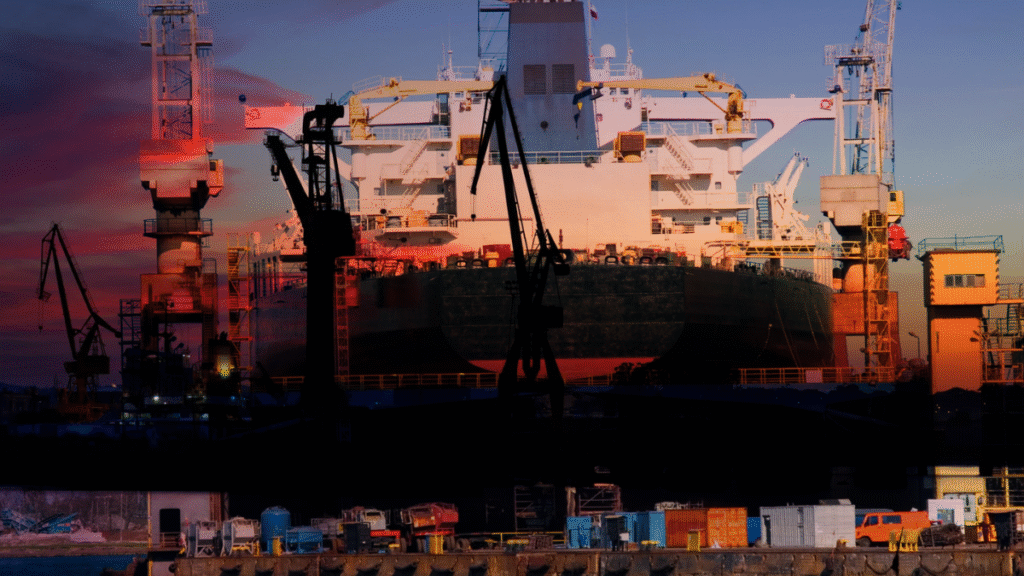Cochin Shipyard, India’s largest public sector shipbuilder, is redefining what it means to be a maritime powerhouse. With an all-time high order book of ₹22,000 crore and 65 ships under construction across defense and commercial segments, the shipyard is combining scale with cutting-edge technology.
Here are six high-tech features that are making Cochin Shipyard-built vessels world-class—and positioning India as a serious player in the global shipbuilding race.
1. Hydrogen Fuel Cell Propulsion: India’s Green Leap
Cochin Shipyard recently launched India’s first indigenous hydrogen fuel cell vessel, marking a pivotal step in clean maritime mobility. Funded partly by the Ministry of Ports, Shipping and Waterways, this pilot vessel (BY150) sailed from Kochi to Varanasi after successful trials in early 2024.
This groundbreaking project not only puts Cochin Shipyard on the global innovation map but also underscores India’s commitment to decarbonizing inland and coastal shipping.
2. Hybrid-Electric Catamarans: Quiet, Clean, and Efficient
For Kochi Metro Rail Ltd (KMRL), Cochin Shipyard is building 23 hybrid electric catamaran ferries, with 14 already delivered. These zero-emission vessels operate on battery-electric propulsion systems, ideal for urban water transit.
These ferries are not just eco-friendly—they’re part of a broader push by Cochin Shipyard to deliver next-gen green transport solutions for India’s expanding smart city infrastructure.
3. Automation in Shipbuilding: Smarter, Faster, Better
Embed from Getty ImagesCochin Shipyard’s production line incorporates automation and modular construction techniques, drastically improving build precision and reducing timelines. From CNC plate cutting to automated welding, smart tools are integral to the shipyard’s large-scale defense and commercial projects.
This tech-forward approach has helped streamline the production of complex platforms like Anti-Submarine Warfare Corvettes and Service Operation Vessels (SOVs), reinforcing Cochin Shipyard’s global competitiveness.
4. Indigenous Design Capability: Made in India, Built for the World
Whether it’s naval corvettes for the Indian Navy or state-of-the-art green ferries, Cochin Shipyard has evolved into a full-spectrum designer and builder. The recent hydrogen fuel cell vessel, for example, is based entirely on indigenous technology—marking a turning point in self-reliant ship design.
This in-house design strength reduces dependency on foreign tech and aligns with the government’s Atmanirbhar Bharat mission.
5. Modular Fabrication: Speed Meets Scalability
Cochin Shipyard uses modular block construction, a globally accepted best practice. Instead of building ships from scratch, large sections are fabricated separately and then assembled—speeding up timelines and improving quality.
This technique is in full use for building 7K multipurpose vessels for European clients, as well as large dredgers and CSOVs.
6. Built to Global Specs: Meeting European Compliance Standards
Cochin Shipyard is not just building for India—it’s exporting ships to some of the toughest maritime markets in the world. Vessels for European clients meet stringent international certifications and environmental standards, including hybrid propulsion and energy efficiency norms.
The shipyard’s compliance with global specs is a testament to its engineering and quality control prowess, earning it repeat orders and new contracts from clients in Germany, Cyprus, and the UK.
And the momentum shows in the numbers too. In Q4 FY25, Cochin Shipyard’s sales surged 35% year-on-year to ₹1,651 crore, while net profit rose 8% to ₹285 crore, reflecting strong topline growth and resilient bottom-line performance despite margin pressure.
The stock is currently trading at 2035. Up 72% from its yearly low and trading above both 50 DMA and 200 DMA as on 16th May 2025.
FAQs
Q1: What is Cochin Shipyard’s current order book value?
As of FY25, Cochin Shipyard holds an all-time high order book worth around ₹22,000 crore, covering 65 ships across defense and commercial categories.
Q2: What are some of the green technologies Cochin Shipyard is using?
CSL is building hydrogen fuel cell vessels, hybrid-electric catamarans, and other zero-emission ships. These innovations aim to reduce carbon footprints in maritime transport.
Q3: What kind of ships is CSL exporting?
CSL is building 7K multipurpose cargo vessels and hybrid Service Operation Vessels (SOVs) for clients in Europe, including Germany and the UK.
Q4: Is Cochin Shipyard profitable?
Yes. In Q4 FY25, CSL reported a 35% year-on-year jump in sales to ₹1,651 crore and an 8% increase in net profit to ₹285 crore, reflecting healthy financial performance.
Q5: What is the significance of the hydrogen fuel cell vessel?
It’s India’s first indigenous hydrogen-powered ship—a pilot project backed by the Ministry of Ports and a major milestone in green shipbuilding.
Q6: How does Cochin Shipyard support India’s defense sector?
CSL is building eight advanced Anti-Submarine Warfare corvettes for the Indian Navy, contributing to national security and indigenous defense capability.
Q7: What makes CSL competitive globally?
Advanced modular construction, in-house design, automation, and compliance with global quality standards make CSL competitive with international shipbuilders.
Disclaimer: I am not a SEBI-registered investment advisor. The information provided in this blog is for educational and informational purposes only and should not be considered as financial advice. Please consult a qualified professional before making any investment decisions.

